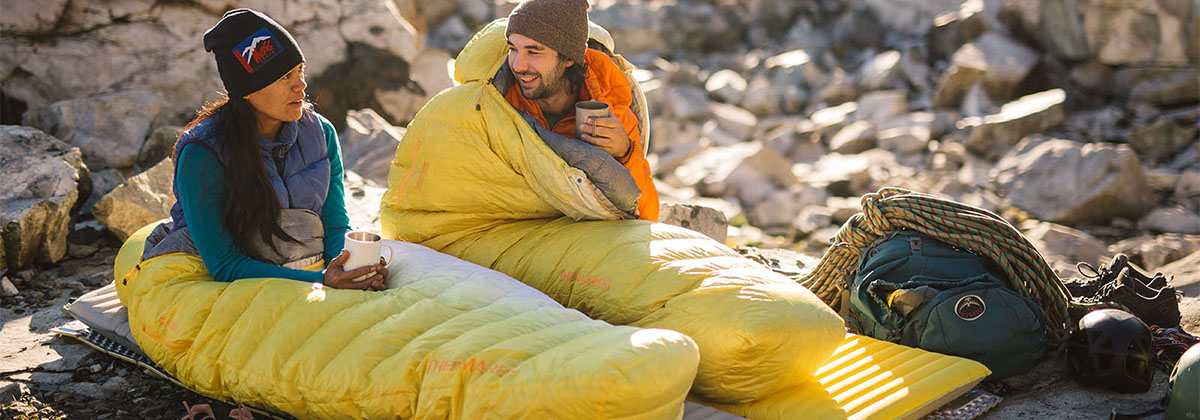29 Apr Everything You Need to Know about Washing Your Sleeping Bag
Excursions and picnics are an integral part of human life that change their mood and peace. Sleeping and enjoying the stars and the nature night view is also delightful. To fully enjoy this beauty, you need a sleeping bag. But caring for these important items are essential for the next trip. This article will explain the correct way to keep and wash a sleeping bag easily.
Sleeping bag caring strategies:
- When using a sleeping bag, be sure to keep it clean and dry.
- As much as possible, try to enter the sleeping bag with a clean body, as contamination may affect the quality of the sleeping bag over time.
- If you want to sleep outside the tent, be sure to use a mattress and avoid direct contact of the sleeping bag with the ground; Because the sleeping bag may be damaged due to small pieces of wood, sharp stones, etc.
- Use a liner inside the sleeping bag. Not only you keep it clean, but also you have a higher temperature inside your sleeping bag. Also, you can easily wash it at the end of the trip.
- Handle the zippers gently. Never tighten the zippers when using the sleeping bag; Because they may rupture.
- Be sure to place your sleeping bag outdoors after using it to dry out all the moisture. Of course, direct sunlight for a long time can weaken the fabric, so choose a proper time.
- When you aren’t using your sleeping bag, you can hang it. It’s beneficial for full sleeping bags; Because the less they’re pressed, the more it affects their quality and longevity.
- If your sleeping bag is wet, don’t squeeze it; compression in the damp state may damage the sleeping bag fibres. It’s vital for feather sleeping bags.
Sleeping bag washing:
You don’t need to wash your sleeping bag after each trip, But washing it annually can be a good idea. Preferably try to wash your sleeping bag professionally with reputable laundries. But if you want to do it yourself, be sure to pay attention to the following points.
Sleeping bag stain removing:
The head and feet parts in the sleeping bag may be dirtier than other areas. Or a stain may have contaminated the sleeping bag. You can easily remove the stain without washing it completely.
- Apply a small amount of soap or detergent to the affected area.
- Clean the stain with a soft toothbrush.
- After brushing, wipe the area with a damp sponge.
- If you can remove your sleeping bag’s cover, so you can remove the stains easily, and there’s no concern about wetting the fibres.
- After the stain removing, put the sleeping bag in a suitable place to dry.
Washing by hand:
- Use a mild detergent. To wash full sleeping bags, be sure to use special detergents.
- Keep in mind that drying takes at least 2 or 3 hours, which may increase for feather sleeping bags.
- Dissolve the detergent in water, put the sleeping bag in it, and let it stay in the solution for a while.
- After rinsing, try to empty the sleeping bag’s water as much as possible. You can also use a dryer to do this. So, fold the whole sleeping bag into a ball to tear or stretch in the dryer.
- After washing and drying in the washing machine, hang the sleeping bag on a clothesline and place it away from direct sunlight.
Washing with the washing machine:
- Be sure to check your sleeping bag carefully if you can clean it in the washing machine. Be sure to follow the instructions for washing your sleeping bag.
- If you use a washing machine to wash your sleeping bag, be sure to set the machine degree to the appropriate condition; Because high temperatures can damage the sleeping bag.
- Open half of the sleeping bag zipper and then put it in the washing machine.
- When washing feather sleeping bags, use a few tennis balls. They prevent the sleeping bag feathers from squeezing and speeds up the sleeping bag’s drying process.
- Use mild, enzyme-free detergents, avoid emollients or bleaches for rinsing.
- After washing, repeat the rinsing step until the detergent is completely removed.
- The nylon layers used in the sleeping bag lose their shape at high temperatures. Be sure to choose low-temperature washers when using dryer programs.
- Sleeping bags filled with synthetic fibres can’t regain their original and bulky state when exposed to high temperatures, even if they are wet.
Important points:
- It’s better to shake the sleeping bag at the campsite before using it. This will cause the feathers or fibres that have been compressed by being placed in the bag to bulk up again. Do this at least half an hour before using the sleeping bag.
- If you have kept your sleeping bag tight and dense, or it has been unused for years, and as a result, the feathers of the sleeping bag stick together and no longer become bulky, you can put 5 or 6 tennis balls in the sleeping bag when washing. Due to the blows they inflict, the tennis balls cause the cohesive feathers to open and become bulky again, and as a result, the sleeping bag will regain its ability to retain heat.
- You can add a few drops of velvet or citronella oil to a cloth ball (linen) and put it in your sleeping bag during storage so that it doesn’t smell bad during the time you don’t use it or bother you when using it.
Washing your sleeping bag is a necessary but time-consuming task. Today’s busy lives sometimes don’t allow us to do these things. So sometimes, because of the dirt in your sleeping bag, you may miss your favourite leisure time or hang out with your friends. But don’t worry anymore, our specialised team will clean your sleeping bag in the best way. So with NeatEx, you can safely do whatever you want.




Sorry, the comment form is closed at this time.